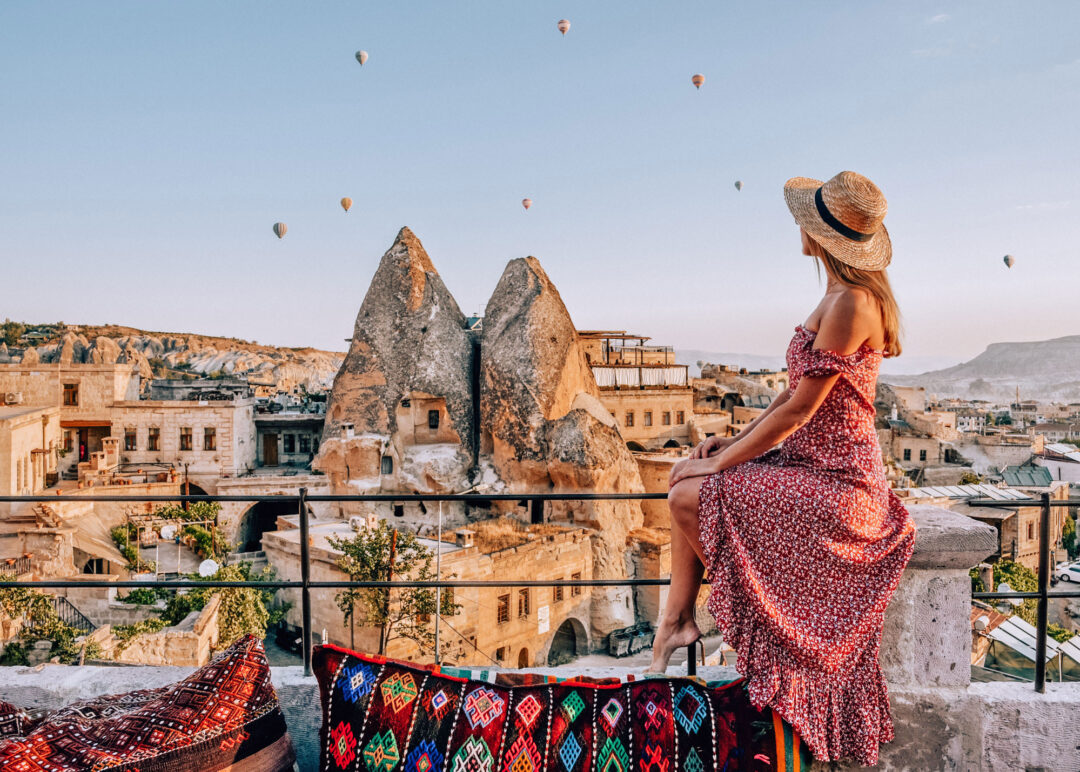
An Open Air Museum, Cappadocia
The Cappadocia region is located in the middle of a once active volcanic area in central Anatolia. Millions of years ago, three of its mountains - Erciyes, Hasandağ and Güllüdağ - were active volcanoes.
The volcanic eruptions were so strong that the lava was up to 150 m thick in some places. For millions of years, volcanoes, wind, rain and ice have formed the region we now know as Cappadocia. As the landscape eroded, basalt stones remained, forming cone-shaped structures as tall as 45 meters.
Locals called these unique rock formations "fairytale chimneys," a name that has persisted through the centuries. If nature was the first artist to arrange the setting, it was the Anatolian man who carved the rock and built houses, churches, and more than 250 underground cities over the centuries.
A unique heritage of nature and humanity;
Cappadocia offers visitors an extraordinary and lavish banquet of natural wonders beyond their wildest imaginations. These wonders are elegantly decorated with works made by man. With its unique natural features that display a harmonious combination of natural and cultural landscape elements, Cappadocia is an enchanting open-air museum and an unparalleled example of the common cultural heritage of humanity.
Cappadocia includes the provinces of Aksaray, Nevşehir, Niğde, Kayseri and Kırşehir. For most people, the name Cappadocia suggests the cities of Uçhisar, Göreme, Avanos, Ürgüp, Derinkuyu, Kaymaklı and Ihlara, where the country has been shaped into fantastic shapes over millions of years.
Crossroads of Civilizations;
The Cappadocian region has been inhabited since prehistoric times, and the best examples have been excavated in Köşk Höyük in Niğde, Aşıklı Höyük in Aksaray and the Civelek Cave in Nevşehir. During the Middle Bronze Age, Cappadocia came under the influence of the Assyrian civilization as a result of extensive trade. It was also written during this period. Researchers have found hundreds of 'Cappadocian Tablets' - cuneiform clay tablets - the texts of which speak of tax regulation, interest rates, marriage contracts, trade disputes, and much more. The Hattis, Hittites, Phrygians, Persians, Romans, Byzantines, Seljuks and Ottomans were all enchanted by the allure of Cappadocia and left traces of their presence here.
Due to its location, Cappadocia has been a critical and strategic region over the years. Major trade routes, including the illustrious Silk Road, traversed both east and west and north and south. As a result of this heavy traffic, the region has been a complex web of historical and cultural influences, a region where different religions and philosophies have met and influenced each other. Cappadocia's trade and resources were tempting, which is why the region was often invaded, raided and looted.
To protect themselves from such raids, locals settled in the caves and grottoes of the region, whose entrances could be hidden so as not to be noticed by troublesome outsiders. Since it might be necessary to stay low for an extended period of time, these troglodyte homes eventually became underground cities with water sources, places to store food, wineries, and even temples. Some of these underground cities date from the pre-Christian era.
Sanctuary of Christians;
In the early years, groups of Christians fleeing from Roman persecution marched into the inaccessible wilderness of Cappadocia, seeking refuge. A group that arrived from Jerusalem in the second century from Antioch (Antakya) and Caesarea (Kayseri) settled in the area now known as Derinkuyu. Finding the soft volcanic tuff easy to carve, they began to expand and connect the natural caves, creating homes, chapels, churches and monasteries that gave these people the peace and security they so desperately seek. goods.
There are said to be about 500 churches and chapels in Cappadocia. The variety and artistry of their architecture, layout and decoration are fascinating and astonishing. Basilicas with single, double or triple aisles, cross-shaped plans, vestibules, aisles, apses, domes, columns, pillars and more - are found in these churches, all hollowed in stone. Many of the churches are also decorated with carefully painted frescoes. The monumental task of restoring, repairing and maintaining these churches and underground cities continues, even though they receive thousands of visitors every year.


